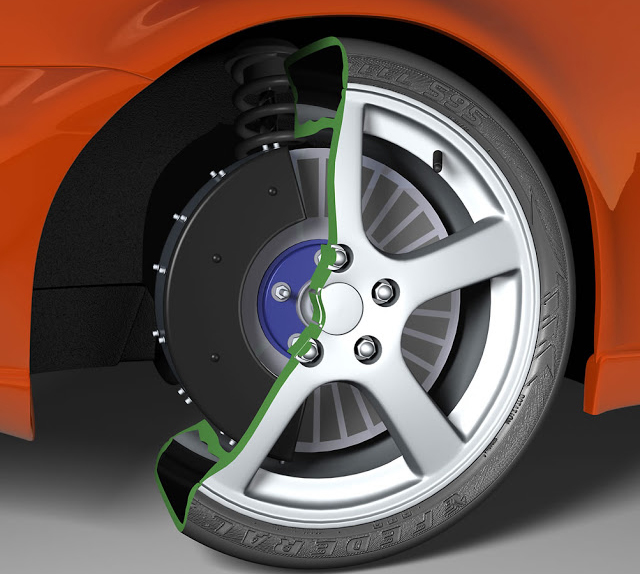The Organization for Economic Cooperation and Development (OECD) is an international organization that states, “works to build better policies for a better life.” Its latest report, “Particulate Emissions Other Than Road Transport Exhaust: An Ignored Environmental Policy Challenge,” highlights the harmful particle emissions emitted by non-tube vehicles of all kinds of exhaust.
These emissions, invisible to people and also to most studies, are a challenge ignored by the environmental policies of cities, regions, and nations worldwide.
Particulate emissions that do not come from tailpipes constitute a little-known but growing proportion of emissions from road traffic that have significant negative impacts on public health.
These emissions also affect electric cars (EV) since, although their propulsion system does not use any fossil fuel combustion, they also participate like cars, trucks, and other means of internal combustion (ICE) in the emission of harmful substances For the environment.
This is how things are today.
This report summarizes the current state of knowledge on this issue’s nature, the causes and consequences of non-exhaust particulate emissions.
It also projects how microparticle emissions of material from sources other than exhaust gases may evolve in the coming years and reflects on the combinations of policy instruments that can address this largely ignored environmental problem.
The transition to cleaner mobility will replace diesel and gasoline cars (ICE) with electric vehicles, eliminating tailpipe emissions. Still, the OECD puts its finger on emissions of other types of particles that will not disappear but will increase.
In the study, the OECD warns of the dangers that PM emissions from traffic on city roads and highways could be even worse for health than from other sources, such as those from burning coal because they concentrated in the areas with the highest population density where there is a large part of the traffic.
“Worldwide, exposure to environmental particulates has been ranked as the seventh most important risk factor for mortality, causing an estimated 4.2 million premature deaths in 2015.”
Beyond the problem of CO2 and NOx
Not only are carbon particles harmful to people’s health, “other elements, such as iron, copper, zinc, and sulfur, have also shown associations with health impacts, such as cardiopulmonary oxidative stress, heart rate variability and tissue damage.”
According to the study, the change towards mobility free of CO2 and NOx emissions such as that brought by electric vehicles is not without environmental dangers and citizens’ health. “The proportion of particulate emissions from non-tailpipe sources has increased in recent years due to significant reductions in exhaust emissions during this period.”
Projections for California, the leading car market in the United States, show the importance of this problem. Even though the North American state is cleaner in terms of PM 2.5 exhaust emissions, Europe has fewer diesel cars in circulation.
Weight as a determining factor of emissions
Other studies indicate how one of the aspects that affect the electric car than internal combustion, in this type of emissions not coming from the exhausts, throws surprising data. The greater weight of an EV than an ICE of similar size and characteristics cause this type of emissions to be more generous since the wear of the road and the tires is directly proportional to the vehicle’s weight.
On the contrary, the OECD report refutes, in part, this hypothesis because electric cars, by using regenerative braking, reduce brake wear and other elements, contributing to the decrease in PM emissions, although here the size and weight of the vehicle are decisive.
“Electric vehicles are estimated to emit 5-19% less PM10 from non-exhaust sources per kilometer than internal combustion motor vehicles (ICEs) in all vehicle classes. However, electric vehicles do not necessarily emit less PM2.5 than ICEs. Although light electric vehicles emit an estimated 11 to 13% less PM2.5 than ICE equivalents, heavier weight electric vehicles emit an estimated 3 to 8% more PM2.5 than ICEs”.
A little-studied phenomenon
Every time we brake and start on a horn, or in front of an elevated zebra crossing, a speed bump, or in front of countless transversal bands commonly known as “lying guards,” which have grown like mushrooms throughout the national geography. They trigger emissions from the wear of brake pads, discs, tire friction with the asphalt, which are highly harmful to health as the OECD report shows.
Today, more efficient speed control systems could significantly reduce the emissions of this invisible enemy of health. But traffic jams continue to exist and remain a problem regardless of whether they are involved in electric or endothermic cars.
Even though there are not many studies on the matter, the OECD report has particular relevance, as it focuses on the total emissions generated by road traffic.
Sustainable mobility is a complex issue where many factors come into play; reducing emissions from internal combustion engines is only a first step; society’s challenge is even more significant.

